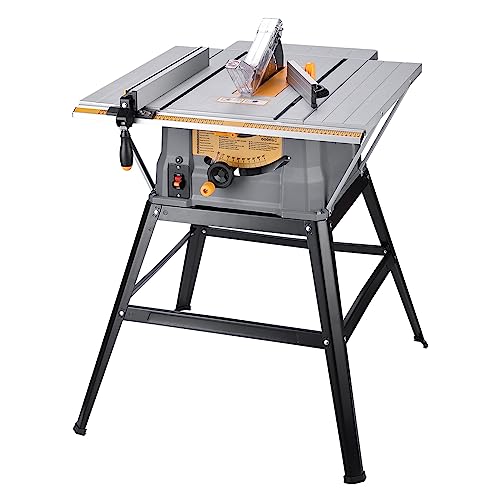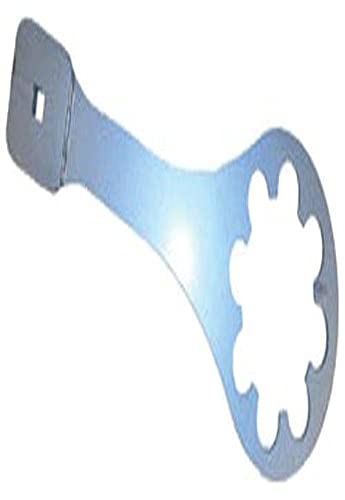
If you are a woodworking enthusiast, you know the importance of having a versatile and efficient table saw. While a table saw is a powerful tool on its own, adding a router to it can take your woodworking projects to a whole new level. By combining the precision of a table saw with the versatility of a router, you can easily create complex profiles, joinery, and decorative edges.
Why add a router to your table saw?
There are several reasons why adding a router to your table saw can be beneficial. First and foremost, it saves space in your workshop by consolidating two tools into one. Additionally, it eliminates the need for extra setups, as you can perform both routing and cutting operations on the same workpiece without having to switch between tools.
Another advantage of adding a router to your table saw is improved precision. When you use a router on a table saw, you have a stable and flat surface to work on, which allows for more accurate cuts and profiles. This is especially useful when working on pieces with intricate designs or when making multiple identical cuts.
Lastly, by adding a router to your table saw, you can take advantage of the convenience and safety features that both tools offer. A router table extension for your table saw provides a dedicated area for routing operations, preventing the router from moving or tipping over during use. This ensures your safety and helps you focus on your woodworking tasks.
Why you should add a router to your table saw
If you are someone who frequently works with wood and has a table saw, you may want to consider adding a router to your setup. Here are a few reasons why adding a router to your table saw could be beneficial:
1. Increased versatility
By adding a router to your table saw, you instantly increase its versatility. A router allows you to perform a wide variety of tasks, such as shaping edges, creating decorative profiles, making dados and rabbets, and more. With a router, you can take your woodworking projects to a whole new level.
2. Time and space-saving
When you have a separate router table, it takes up additional space in your workshop. By integrating a router into your table saw, you save both space and time. You don’t have to move between different stations or waste time setting up and aligning different tools; everything is conveniently located in one place.
Additionally, if you have a small workshop, combining your table saw and router saves valuable floor space. You can optimize your workspace and ensure efficient workflow without sacrificing functionality.
Overall, adding a router to your table saw can greatly improve your woodworking capabilities while saving time and space. Whether you are a professional woodworker or a hobbyist, this addition will enhance your projects and make your work more efficient.
Benefits of Adding a Router to Your Table Saw
Adding a router to your table saw can greatly enhance its functionality and expand the range of woodworking projects you can tackle. Here are some key benefits of incorporating a router with your table saw:
|
Versatility: |
A router equipped table saw provides you with the ability to perform a wide variety of woodworking tasks. Whether you want to create intricate decorative edges, cut dadoes and rabbets, or make precision joinery, having a router attachment allows for greater versatility in your projects. |
|
Efficiency: |
By combining a router and a table saw, you can save time and effort by eliminating the need to switch between multiple tools. With a router attached to your table saw, you can perform both routing and cutting operations in one consolidated workspace, allowing for increased efficiency in your woodworking projects. |
|
Space-saving: |
While having a separate router table requires additional space in your workshop, adding a router to your table saw minimizes the footprint of your tools. This space-saving feature is especially beneficial for woodworkers with limited workspace, as it allows them to maximize functionality without sacrificing valuable floor space. |
|
Precision: |
Integrating a router with your table saw can help you achieve more precise and accurate cuts. The stability and precision of a table saw, combined with the control and finesse of a router, enable you to achieve cleaner cuts and better control over the depth and width of your woodworking projects. |
|
Cost-effective: |
Investing in a router attachment for your table saw can be a cost-effective solution compared to purchasing a separate router table. By utilizing your existing table saw and adding a router, you can save money while still enjoying the benefits of both tools. |
Overall, incorporating a router with your table saw is a practical choice that offers a multitude of benefits. It expands the capabilities of your table saw, improves efficiency, saves space, enhances precision, and offers cost savings. With these advantages, adding a router to your table saw is a wise investment for any woodworker.
Improved Versatility and Functionality
By adding a router to your table saw, you can significantly increase the versatility and functionality of your woodworking projects. With a router, you can perform a wide range of tasks, including creating intricate designs, adding decorative edges, and cutting complex joinery.
Here are some key benefits of adding a router to your table saw:
- Expanded Cutting Options: With a router, you can create a variety of different cuts and shapes that are not possible with a regular table saw. This opens up a whole new world of design possibilities for your projects.
- Efficiency and Accuracy: By combining the power of a table saw with the precision of a router, you can achieve both speed and accuracy in your woodworking. This is especially useful when working on large projects or when you need to make multiple identical cuts.
- Save Space: Instead of having separate tools for ripping, crosscutting, and routing, you can consolidate them into one space-saving machine. This not only saves you space in your workshop but also eliminates the need to switch between tools for different tasks.
- Cost Savings: Investing in a router attachment for your table saw is often more cost-effective than purchasing a separate router. This is especially true if you already have a high-quality table saw and only need occasional router capabilities.
Overall, adding a router to your table saw can greatly enhance your woodworking capabilities and make your projects more efficient and professional-looking. Whether you’re a hobbyist or a professional woodworker, this simple upgrade can take your craft to the next level.
Tools and materials needed
Before you begin adding a router to your table saw, make sure you have all the necessary tools and materials. Here is a list of what you will need:
- A router
- A table saw
- A router table insert
- A router table fence
- A router table top
- A router plate
- Router bits
- Measuring tape
- Drill
- Screws
- Screwdriver
- Wrench
- Safety goggles
- Ear protection
- Dust mask
Once you have gathered all the necessary tools and materials, you will be ready to start the process of adding a router to your table saw.
List of tools required
Before you begin adding a router to your table saw, there are a few tools that you will need. These tools will help you safely and accurately complete the installation process. Here is a list of the tools required:
| Tool | Description |
|---|---|
| Table saw | A table saw with a suitable surface for router installation. |
| Router | A router that is compatible with your table saw. |
| Router lift | A router lift to easily raise and lower the router. |
| Router table insert | An insert that fits into your table saw’s surface and holds the router. |
| Router fence | A fence that attaches to the table saw and provides support for routing operations. |
| Wrench | A wrench to tighten and loosen router and insert fasteners. |
| Drill | A drill for creating pilot holes for screws or other fasteners. |
| Screwdriver | A screwdriver for tightening and loosening screws. |
| Clamps | Clamps to secure the router table insert and fence during installation. |
Make sure you have these tools readily available before you begin the process of adding a router to your table saw. Having the right tools will make the installation easier and ensure a successful outcome.
Types of routers compatible with table saws
When it comes to adding a router to your table saw, it’s important to choose the right one that is compatible with your setup. Here are a few types of routers that are commonly used with table saws:
- Fixed-base router: This type of router is the most common and is often used for general woodworking tasks. It is mounted to a fixed base, which provides stability and precision while making cuts. Fixed-base routers are often compatible with table saws and can be easily attached to the fence or table.
- Plunge router: Plunge routers are versatile tools that can be used for both handheld and table-mounted applications. They have a spring-loaded base that allows the bit to plunge into the workpiece, making it easier to create deep cuts and mortises. Some plunge routers can also be used in a fixed-base configuration, making them suitable for table saw setups.
- Trim router: Trim routers are smaller and more lightweight than fixed-base or plunge routers, making them ideal for precision work and trimming edges. While they may not be as powerful as larger routers, some models can still be used with table saws by attaching them to a router table or fence.
- Router combo kit: If you’re looking for versatility, a router combo kit is a great option. These kits often include both a fixed-base and plunge router, allowing you to switch between the two depending on your project needs. Many combo kits also come with additional accessories, such as different router bits, making them a convenient choice for table saw setups.
Before purchasing a router for your table saw, it’s important to check the compatibility specifications provided by the manufacturer. This will ensure that the router can be safely and securely mounted to your table saw, allowing you to make precise and accurate cuts.
Safety Precautions
When adding a router to your table saw, it is important to take certain safety precautions to ensure a safe working environment. By following these guidelines, you can minimize the risk of accidents and injuries:
1. Read the manual
Before getting started, thoroughly read the instruction manual provided by the manufacturer of your table saw and router. Familiarize yourself with the recommended safety procedures.
2. Wear appropriate protective gear
Always wear safety glasses or goggles to protect your eyes from flying debris. Use ear protection to safeguard against the noise generated by the router and other power tools. Additionally, wear a dust mask to avoid inhaling particles and dust.
3. Ensure proper setup
Make sure your table saw is securely set up and stable before adding the router attachment. Check that the saw’s fence, miter gauge, and other components are properly aligned and functioning correctly.
4. Use the right router bits
Make sure to use router bits appropriate for the material and type of cut you are making. Dull or damaged bits should be replaced to maintain safe and efficient cutting.
5. Secure the workpiece
Always secure your workpiece firmly before routing. Use clamps or a vise to prevent the material from moving or vibrating during the cutting process.
6. Start with a test cut
Before working on your final project, it is advisable to perform a test cut on scrap material. This allows you to ensure that the router is functioning properly and that the cut will be accurate and clean.
7. Maintain a safe distance
Keep your hands and body a safe distance away from the router bit at all times. This reduces the risk of accidental contact and potential injuries.
8. Disconnect power when not in use
When not actively using the router or making adjustments, disconnect the power supply to prevent accidental activation. Also, unplug the router when changing bits or making any other adjustments.
9. Keep the workspace clean
Regularly clean the work area to remove debris, sawdust, and other potential hazards. A clean workspace not only promotes safety but also ensures accurate and smooth cuts.
10. Stay focused and alert
Always remain focused and alert when working with power tools. Avoid distractions and never operate the router when you are tired, under the influence of drugs or alcohol, or feeling unwell.
By following these safety precautions, you can enjoy a productive and injury-free woodworking experience when adding a router to your table saw.
Importance of wearing personal protective equipment (PPE)
When working with power tools such as a router on a table saw, it is essential to prioritize your safety by wearing personal protective equipment (PPE). PPE refers to any equipment or clothing worn to minimize or prevent injuries in the workplace.
Types of Personal Protective Equipment
There are various types of PPE that should be worn when operating power tools, including:
- Safety goggles: Protect your eyes from flying debris, dust, and other hazards.
- Ear muffs or earplugs: Reduce noise levels and prevent hearing damage.
- Dust mask: Filter out harmful particles and dust to avoid respiratory issues.
- Gloves: Provide hand protection from sharp edges and potential cuts.
- Steel-toe boots: Protect your feet from heavy objects or falling materials.
- Protective clothing: Avoid loose clothing that can get caught in machinery, and consider wearing a work apron or coveralls for added protection.
Benefits of Using PPE
Wearing appropriate PPE while using a router on your table saw offers several benefits, including:
- Reduced risk of injuries: PPE acts as a barrier between you and potential hazards, minimizing the chance of accidents and injuries.
- Compliance with safety regulations: Wearing PPE ensures compliance with safety standards and regulations set by government agencies and industry organizations.
- Protection from health hazards: Certain power tools, like routers, generate dust, noise, and other potential health hazards. PPE helps prevent the inhalation of harmful particles, reduces noise levels, and safeguards your overall well-being.
- Enhanced focus and comfort: Wearing appropriate PPE allows you to concentrate better on your work knowing you are protected, improving productivity and comfort.
Remember, wearing PPE is not just a recommendation, but a necessity to ensure your safety while operating power tools like a router on a table saw. Prioritize your well-being and make it a habit to wear the appropriate PPE for every job.






